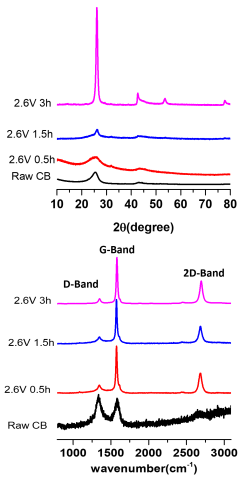CMI researchers from Oak Ridge National Laboratory conducted the activity for this highlight
Innovation
New method of graphitization enables faster graphitization at much lower temperature (850 °C) compared to the conventional Acheson process (>3000°C) and tunability of the graphite structure.
Achievement
Uncovered the mechanism of electrochemical graphitization in molten salts, with XRD and Raman measurements indicating that graphitization initiates at the particle surface and grows towards the bulk of the material.
Significance and Impact
Understanding the mechanism of electrochemical graphitization in molten salts is critical for tuning the morphology and microstructure, crystallinity, and degree of the graphitization. Controlling these structural parameters is crucial to achieving highly reversible electrochemical performance of anode materials in lithium-ion batteries.
Hub Target Addressed
Developing novel materials processing methods.

